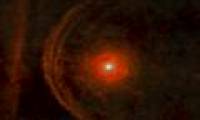
The star Betelgeuse 10 million years old with a diameter of more than 1.3 billion kilometers may have swallowed a companion mass with the mass of the Sun.
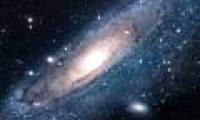
The most accurate measurement conducted by Canadian scientists shows the total mass of stars, black holes, dust, dark matter and unspecified flying objects of the Milky Way range

Australian scientists discovered a planet orbiting a parent star at a billion billion kilometers, 7,000 times the distance between the Earth and the Sun.
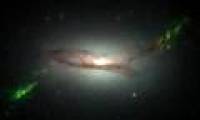
The Hubble Space Telescope of the US Aeronautics Agency (NASA) has observed the specter of destined celestial bodies lurking around where these objects appear and disappear.

NASA has announced a new map with more than 560 million stars, galaxies and asteroids, many of which have never been known before.

Experts of the Russian Federal Space Agency (Roskomos) were embarrassed to see the altitude of the Mars spacecraft, wandering in the air, rising abnormally.

Russia's Phobos-Grunt spacecraft and China's Yinghuo 1 will be launched on Mars's Phobos satellite using Zenit missiles at the Baikonur space airport in Kazakhstan on November 8.

Experts at NASA claimed they had counted nearly all of the celestial bodies that could endanger our planet.

An American space telescope has just found a planet revolving around two stars, a phenomenon that is only observed in fantasy movies.

The moon's core is iron! This conclusion was made by René Weber, NASA's Marshall Space Flight Center (USA) and Raphael Garcia, University of Toulouse (France) after dealing with
 The star Betelgeuse 10 million years old with a diameter of more than 1.3 billion kilometers may have swallowed a companion mass with the mass of the Sun.
The star Betelgeuse 10 million years old with a diameter of more than 1.3 billion kilometers may have swallowed a companion mass with the mass of the Sun. The most accurate measurement conducted by Canadian scientists shows the total mass of stars, black holes, dust, dark matter and unspecified flying objects of the Milky Way range
The most accurate measurement conducted by Canadian scientists shows the total mass of stars, black holes, dust, dark matter and unspecified flying objects of the Milky Way range Australian scientists discovered a planet orbiting a parent star at a billion billion kilometers, 7,000 times the distance between the Earth and the Sun.
Australian scientists discovered a planet orbiting a parent star at a billion billion kilometers, 7,000 times the distance between the Earth and the Sun. The Hubble Space Telescope of the US Aeronautics Agency (NASA) has observed the specter of destined celestial bodies lurking around where these objects appear and disappear.
The Hubble Space Telescope of the US Aeronautics Agency (NASA) has observed the specter of destined celestial bodies lurking around where these objects appear and disappear. NASA has announced a new map with more than 560 million stars, galaxies and asteroids, many of which have never been known before.
NASA has announced a new map with more than 560 million stars, galaxies and asteroids, many of which have never been known before. Experts of the Russian Federal Space Agency (Roskomos) were embarrassed to see the altitude of the Mars spacecraft, wandering in the air, rising abnormally.
Experts of the Russian Federal Space Agency (Roskomos) were embarrassed to see the altitude of the Mars spacecraft, wandering in the air, rising abnormally. Russia's Phobos-Grunt spacecraft and China's Yinghuo 1 will be launched on Mars's Phobos satellite using Zenit missiles at the Baikonur space airport in Kazakhstan on November 8.
Russia's Phobos-Grunt spacecraft and China's Yinghuo 1 will be launched on Mars's Phobos satellite using Zenit missiles at the Baikonur space airport in Kazakhstan on November 8. Experts at NASA claimed they had counted nearly all of the celestial bodies that could endanger our planet.
Experts at NASA claimed they had counted nearly all of the celestial bodies that could endanger our planet. An American space telescope has just found a planet revolving around two stars, a phenomenon that is only observed in fantasy movies.
An American space telescope has just found a planet revolving around two stars, a phenomenon that is only observed in fantasy movies. The moon's core is iron! This conclusion was made by René Weber, NASA's Marshall Space Flight Center (USA) and Raphael Garcia, University of Toulouse (France) after dealing with
The moon's core is iron! This conclusion was made by René Weber, NASA's Marshall Space Flight Center (USA) and Raphael Garcia, University of Toulouse (France) after dealing with



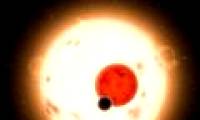
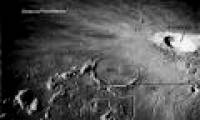
 NASA's 'Ninth Planet' Shows Signs of Being Friendly to Life
NASA's 'Ninth Planet' Shows Signs of Being Friendly to Life Why did American astronauts have to be quarantined when returning to Earth?
Why did American astronauts have to be quarantined when returning to Earth? China surprises the world by building a cable-stayed bridge 'above the clouds'
China surprises the world by building a cable-stayed bridge 'above the clouds' Why do women sleep less and wake up more than men?
Why do women sleep less and wake up more than men? Revealing the secret inside the stuffed animal claw machine, from there, summarizing experience to help you increase your winning rate many times over
Revealing the secret inside the stuffed animal claw machine, from there, summarizing experience to help you increase your winning rate many times over What would happen if you dug a hole through the Earth and jumped in?
What would happen if you dug a hole through the Earth and jumped in? Camera takes a photo that lasts 1,000 years
Camera takes a photo that lasts 1,000 years Was there nuclear war in ancient times?
Was there nuclear war in ancient times?